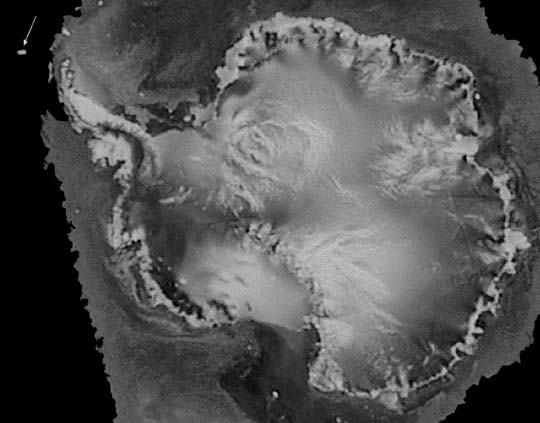


A NASA satellite instrument is keeping an eye on an iceberg the size of Rhode Island, the first time this space technology has been used to track a potential threat to international shipping.
NASA's new orbiting SeaWinds radar instrument, flying aboard the QuikScat satellite, will monitor Iceberg B10A, which snapped off Antarctica seven years ago and has since drifted into a shipping lane.
Iceberg B10A, which measures about 38 by 77 kilometers (about 24 miles by 48 miles), was spotted by the Instrument during its first pass over Antarctica, demonstrating SeaWinds' all-weather and day-night observational capabilities. The massive iceberg extends about 90 meters (300 feet) above water and may reach as deep as 300 meters (1,000 feet) below the ocean's surface. It is breaking up into smaller pieces that could pose a threat to commercial, cruise and fishing ships if the pieces are blown back into the shipping lane by high winds.
"Although the iceberg isn't posing a threat to ships in the area right now, pieces of B10A could be blown back into the shipping lane and become a danger to ships using the Antarctic's Drake Passage," said Dr. David Long, a member of the SeaWinds science team from Utah's Brigham Young University, Provo, UT. Long said that the SeaWinds instrument will be able to help scientists at the National Ice Center, Suitland, MD, track pieces of the iceberg down to 4 kilometers (about 2.5 miles) in size.
For more information about QuikSCAT:
Winds (NASA scatterometry)
QuikSCAT Fact Sheet
NSIDC Monitoring of Antarctic Ice Shelves
Image courtesy QuikSCAT project, NASA JPL